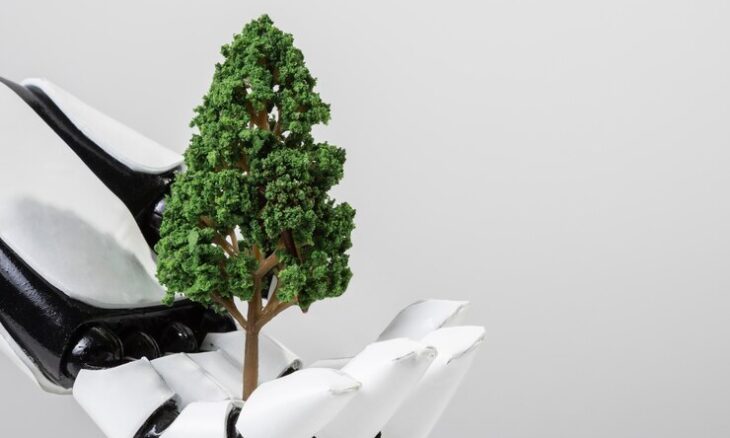The Promise and Peril of AI
Artificial Intelligence (AI) is often celebrated for its transformative potential, particularly in industries seeking to optimize efficiency, cut costs, and innovate faster. But beneath the surface of this technological marvel lies a pressing question: is AI being wielded responsibly when it comes to sustainability and environmental impact?
While AI has the potential to drive sustainability through smarter resource management and renewable energy optimization, its rapid adoption also fuels concerns about unchecked mass production, increased energy consumption, and ethical oversight. In this article, we’ll explore the complex interplay between AI, sustainability, and the caution—or lack thereof—demonstrated by industries embracing this technology.
1. The Green Potential of AI: Driving Sustainability
AI has proven to be a powerful ally in advancing sustainable practices. By leveraging data-driven insights, industries can reduce waste, optimize resource usage, and minimize their carbon footprint.
Notable Contributions:
- Energy Optimization: AI systems like Google DeepMind have reduced energy usage in data centers by up to 40%, setting a benchmark for eco-friendly computing.
- Supply Chain Efficiency: AI-powered tools such as SAP’s GreenToken track materials’ origins, ensuring ethical sourcing and reducing environmental impact.
- Agricultural Sustainability: Precision farming technologies, like John Deere’s AI-driven equipment, optimize water usage and reduce chemical overuse.
AI, when applied responsibly, is our greatest tool in mitigating the environmental crises of our time,” says Dr. Kate Brandt, Google’s Chief Sustainability Officer.
Learn more about AI’s role in energy efficiency: Google DeepMind Sustainability.

2. The Dark Side: AI-Driven Mass Production and Environmental Costs
While AI enables industries to scale production efficiently, it often comes at an environmental cost. The drive for mass production, fueled by AI, exacerbates overconsumption and resource depletion.
Key Concerns:
- Energy Consumption: Training large AI models like GPT-4 can consume as much electricity as powering thousands of homes for a year. The carbon emissions linked to AI computing are rising alarmingly.
- Planned Obsolescence: AI-driven marketing tools promote rapid product turnover, encouraging unsustainable consumer habits.
- E-Waste Generation: The accelerated pace of AI innovation leads to frequent hardware upgrades, contributing to the global e-waste crisis.
The very tools designed to optimize our resources can also drive their unchecked exploitation,” warns Dr. Timnit Gebru, AI ethics researcher and co-founder of DAIR.
3. Are Industries Balancing Innovation with Caution?
Many industries tout sustainability initiatives but often fall short when it comes to aligning AI adoption with eco-friendly practices.
Examples of Divergence:
- Technology Giants: While companies like Amazon Web Services (AWS) invest in renewable energy, the sheer scale of their operations raises questions about net environmental benefits.
- Fast Fashion: AI optimizes supply chains for brands like Shein, enabling faster production cycles. However, this fuels a throwaway culture that is environmentally disastrous.
Cautionary Tales:
In 2023, an investigative report on AI-powered mining operations revealed that increased efficiency led to over-mining, damaging ecosystems and displacing indigenous communities.
Learn more about sustainability in AI: AWS Renewable Energy Projects.
4. The Ethical Dilemma: AI’s Role in Greenwashing
As industries adopt AI, many use sustainability as a marketing buzzword without making meaningful changes. This practice, known as greenwashing, undermines genuine environmental efforts.
Red Flags to Watch:
- Overstated Claims: Companies tout AI-driven sustainability improvements without disclosing the environmental cost of implementing these systems.
- Opaque Metrics: Lack of standardized reporting makes it difficult to assess the true environmental impact of AI initiatives.
AI has immense potential for good, but industries must ensure that their pursuit of profit doesn’t come at the expense of the planet,” says Dr. Julia Powles, a professor of law and technology ethics.
5. Striking a Balance: A Blueprint for Sustainable AI
For AI to be a force for sustainability, industries must adopt transparent and accountable practices:
Recommendations:
- Invest in Green Computing: Companies must prioritize renewable energy sources for powering AI operations and develop energy-efficient algorithms.
- Circular Economy Initiatives: AI can optimize recycling and repurposing processes, reducing the environmental toll of discarded products.
- Global Collaboration: Governments and industries should collaborate on creating AI sustainability standards, ensuring that innovation aligns with environmental goals.
Leading the Way:
- Microsoft AI for Earth: This initiative funds AI projects focused on environmental conservation, from biodiversity mapping to carbon sequestration.
- IBM Green Horizon: AI models predict air pollution levels, helping cities devise strategies to improve air quality.
Discover Microsoft’s environmental AI projects: AI for Earth.
Conclusion: AI’s Double-Edged Impact

AI is a powerful force that can either accelerate environmental degradation or drive the solutions needed to combat it. The choice lies in how industries wield this technology. Are we innovating responsibly, or are we prioritizing mass production and profits at the expense of sustainability?
As AI continues to evolve, its role in shaping the planet’s future cannot be ignored. The challenge is to harness its capabilities while mitigating its risks. For industries, this means aligning technological innovation with ethical and environmental responsibility.
The clock is ticking, and AI is moving faster than ever. Will we rise to the challenge or let this double-edged sword cut deeper into our planet’s fragile ecosystems?
What’s your take on AI’s role in sustainability? Share your thoughts in the comments below or explore related articles:
How AI is Shaping the Future of Technology
AI’s Lightning Speed Revolution: Transforming Industries and Redefining Consumption










